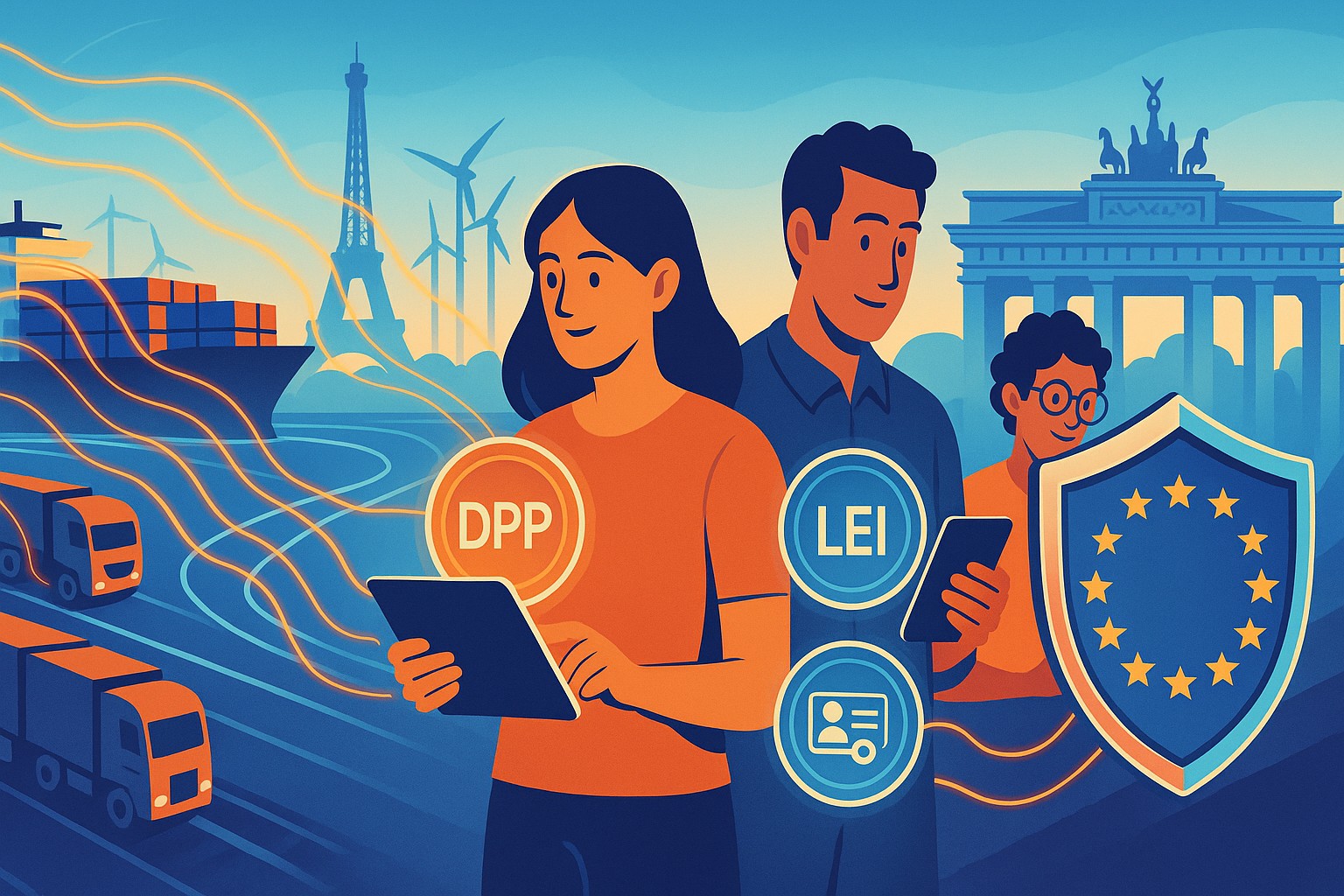
The DigitalTrade4.EU consortium has issued a comprehensive proposal aimed at shaping the future of digital trade in Europe. At the core of its recommendations is the belief that a fully digital, interoperable, and secure Single Market is not only essential for economic growth but also critical for Europe’s defence resilience and sustainability goals.
The eFTI Regulation: A Cornerstone for Digital Trade
A key pillar in this transformation is the EU Electronic Freight Transport Information (eFTI) Regulation (EU) 2020/1056. This regulation creates a legal framework enabling companies to submit freight transport information to public authorities in digital form, replacing traditional paper-based processes.
In the trade context, this is a significant milestone. Today, a large proportion of freight movements within and across EU borders still rely on paper documents, leading to delays, higher costs, manual errors, and inefficiencies. This is particularly burdensome for small and medium-sized enterprises (SMEs) engaged in cross-border trade, where inconsistent document requirements across Member States create complexity and slow down operations.
The eFTI Regulation directly tackles these challenges by:
- Reducing administrative burdens through digital processes.
- Enabling real-time data sharing between businesses and authorities.
- Supporting seamless cross-border logistics within the Single Market.
- Lowering costs for businesses, particularly benefiting SMEs.
- Enhancing supply chain transparency, resilience, and compliance.
With the regulation becoming fully mandatory by July 2027, it promises to accelerate Europe’s transition towards a paperless, efficient, and sustainable logistics environment, while serving as a foundation for broader green and digital initiatives, such as the dEU Green Deal, Digital Product Passports (DPPs), and carbon tracking mechanisms.
DigitalTrade4.EU’s Key Recommendations for the Future
To ensure that the eFTI Regulation delivers maximum benefits—and supports Europe’s strategic autonomy—DigitalTrade4.EU proposes the following key actions:
- Adopt the UNCITRAL MLETR Framework: Implementing the Model Law on Electronic Transferable Records (MLETR) across the EU would enable electronic documents like e-bills of lading to carry the same legal weight as paper versions. MLETR achieves this by establishing a uniform legal standard for digital signatures and tamper-proof records, ensuring enforceability across jurisdictions. This transition could cut trade document processing time by up to 40%, as evidenced by Singapore’s adoption, where digitized bills of lading reduced port clearance delays by 30%.
- Support Decentralized Digital Architectures: In addition to centralized data platforms, adopting Distributed Ledger Technologies (DLT), such as blockchain or Hyperledger, would significantly enhance security, resilience, and flexibility by reducing reliance on single points of failure. For example, DLT allows multiple parties to access and verify freight data simultaneously, minimizing disputes and fraud risks.
- Advance Digital Product Passports (DPPs): DPPs would provide transparent, verifiable data about products’ origins, materials, environmental impact, and lifecycle. For instance, a DPP for a battery could include details on cobalt sourcing, carbon footprint calculations, and recycling instructions. These passports would support compliance with EU regulations including the Green Deal, Carbon Border Adjustment Mechanism (CBAM), and the Ecodesign for Sustainable Products Regulation (ESPR).
- Extend DPPs for Defence Supply Chains: Incorporating DPPs into military supply chains would ensure real-time tracking of critical components, adherence to NATO standards, and prevention of counterfeiting—critical to European defence autonomy.
- Enable Interoperability Across Digital Compliance Platforms: The proposal advocates for seamless integration between eFTI (Electronic Freight Transport Information) platforms, DPP systems, and portals like the F-gas database. This would reduce duplication, simplify compliance, and boost efficiency.
- Leverage eIDAS 2.0 for Secure Digital Identity: The use of the European Digital Identity (EUDI) Wallet and the EU Business Wallet should become the default for cross-border authentication. These systems empower users with control over their data while ensuring regulatory compliance.
- Mandate Legal Entity Identifiers (LEI) and verifiable LEIs (vLEI): Incorporating globally recognized LEIs ensures the traceability and legitimacy of entities in trade. This strengthens fraud prevention, enhances supply chain security, and aligns with financial sector standards.
- Invest in Dual-Use Digital Infrastructure: DigitalTrade4.EU recommends allocating funding to secure, quantum-safe networks that can serve both civilian logistics and military mobility corridors.
Proposed Legislative Changes
The consortium proposes detailed amendments to the draft eFTI implementing regulation to align it with the new eIDAS 2.0 regulation. This includes updated definitions, support for decentralized networks, direct integration of DPPs, and expanded identity verification requirements based on LEI and vLEI.
A critical recommendation is to replace references to the outdated eIDAS 1.0 framework with eIDAS 2.0 to future-proof the eFTI regulation. Without this, the risk of fragmented digital identity systems and inefficiencies would undermine the EU’s goal of a seamless Single Market.
A Strategic Roadmap for Europe’s Digital Future
The document also outlines a Green-Digital Trade Leadership Roadmap that spans initiatives such as:
- Expand cooperation with Asia through baseline Digital Economy Partnership Agreements (DEPAs), modeled on frameworks like the EU-Singapore Digital Partnership, to harmonize cross-border data flows, align digital trade rules, and foster seamless digital trade
- Integrating ESG metrics into trade finance by requiring banks to assess a company’s sustainability performance before approving loans, thereby incentivizing greener supply chains.
- Implementing DPPs widely across industries.
- Funding secure digital trade and logisics corridors.
- Promoting platform interoperability to avoid vendor lock-in.
- Launching training academies for SMEs on digital trade and logistics tools.
Conclusion: A Call to Action
DigitalTrade4.EU urges the European Commission to act swiftly, aligning trade and logisics legal framewords with modern digital standards like MLETR and eIDAS 2.0. The consortium envisions an EU that leads the global green-digital transition, secures its defence logistics, and empowers businesses with interoperable, efficient, and future-proof digital infrastructure.
The message is clear: digital transformation is no longer optional but a strategic necessity for Europe’s competitiveness, resilience, and security.
Summary by DigitalTrade4.EU
